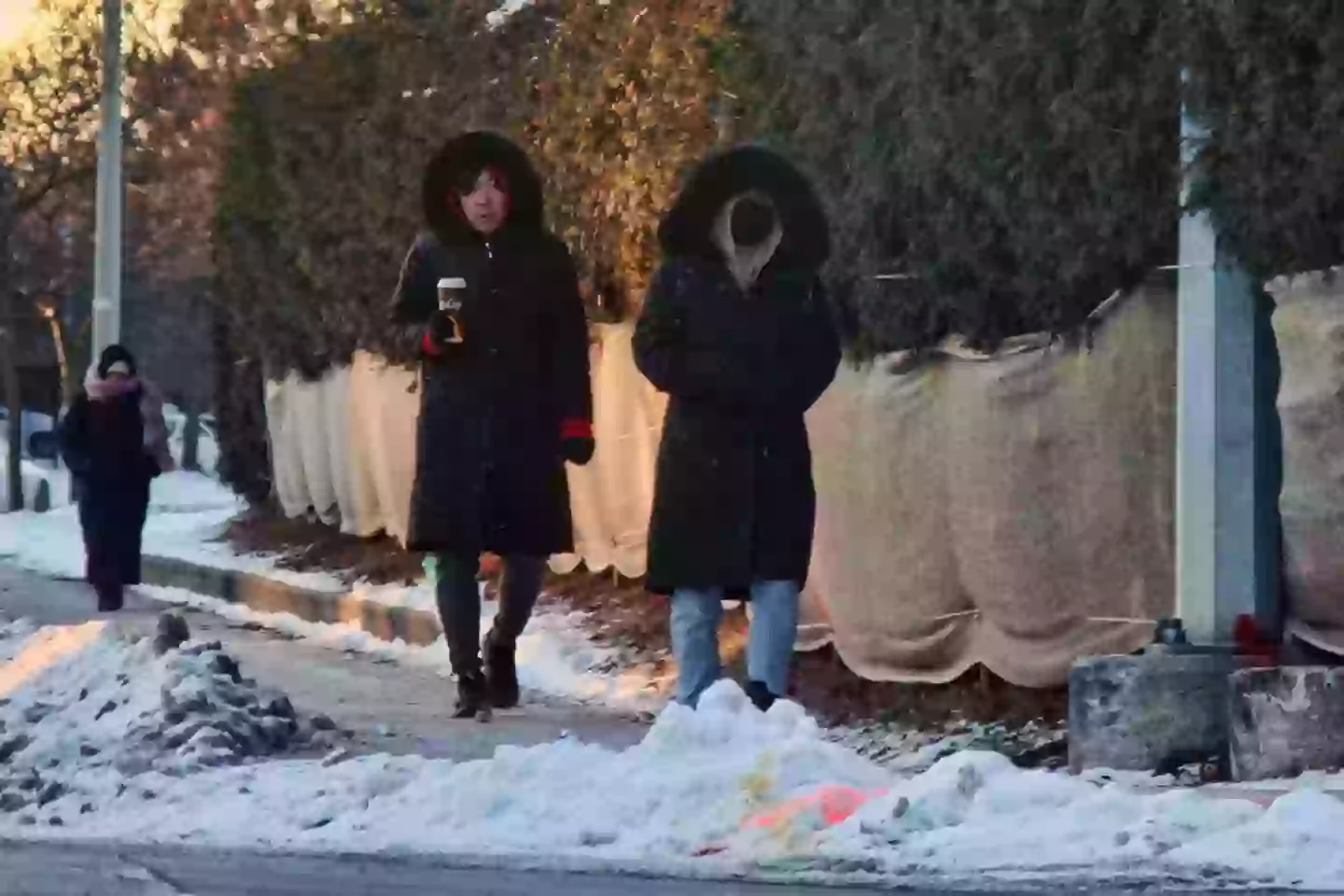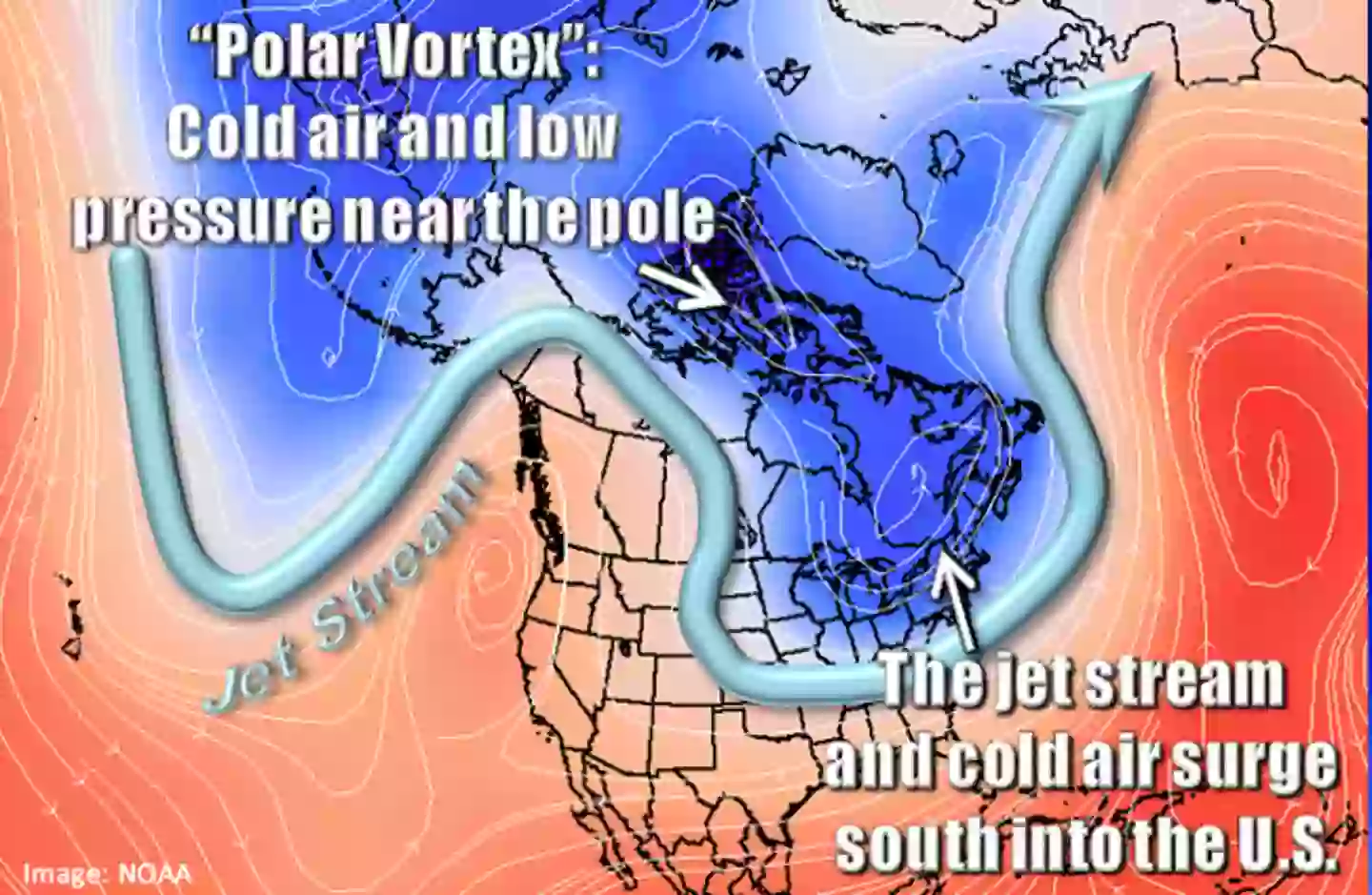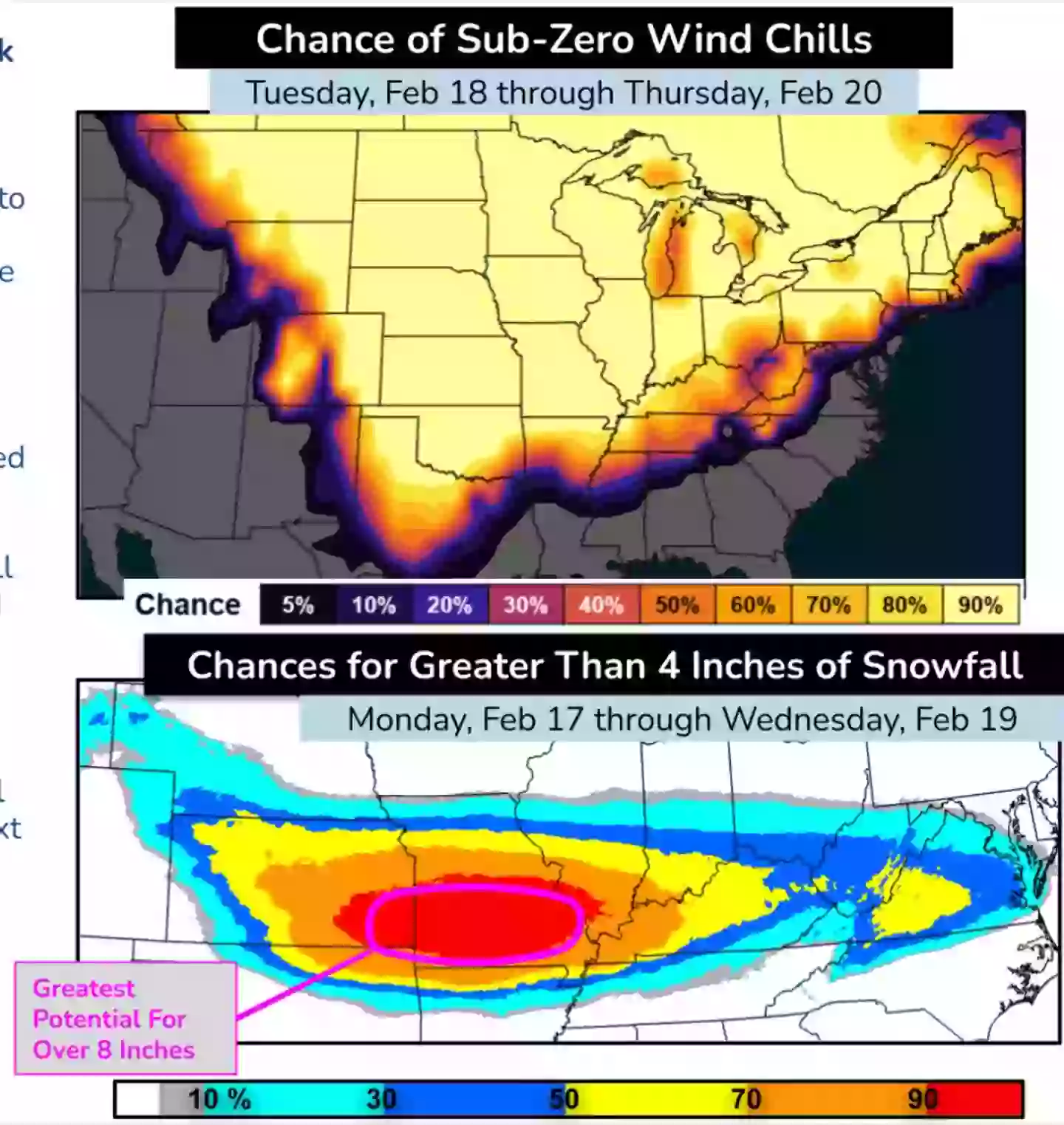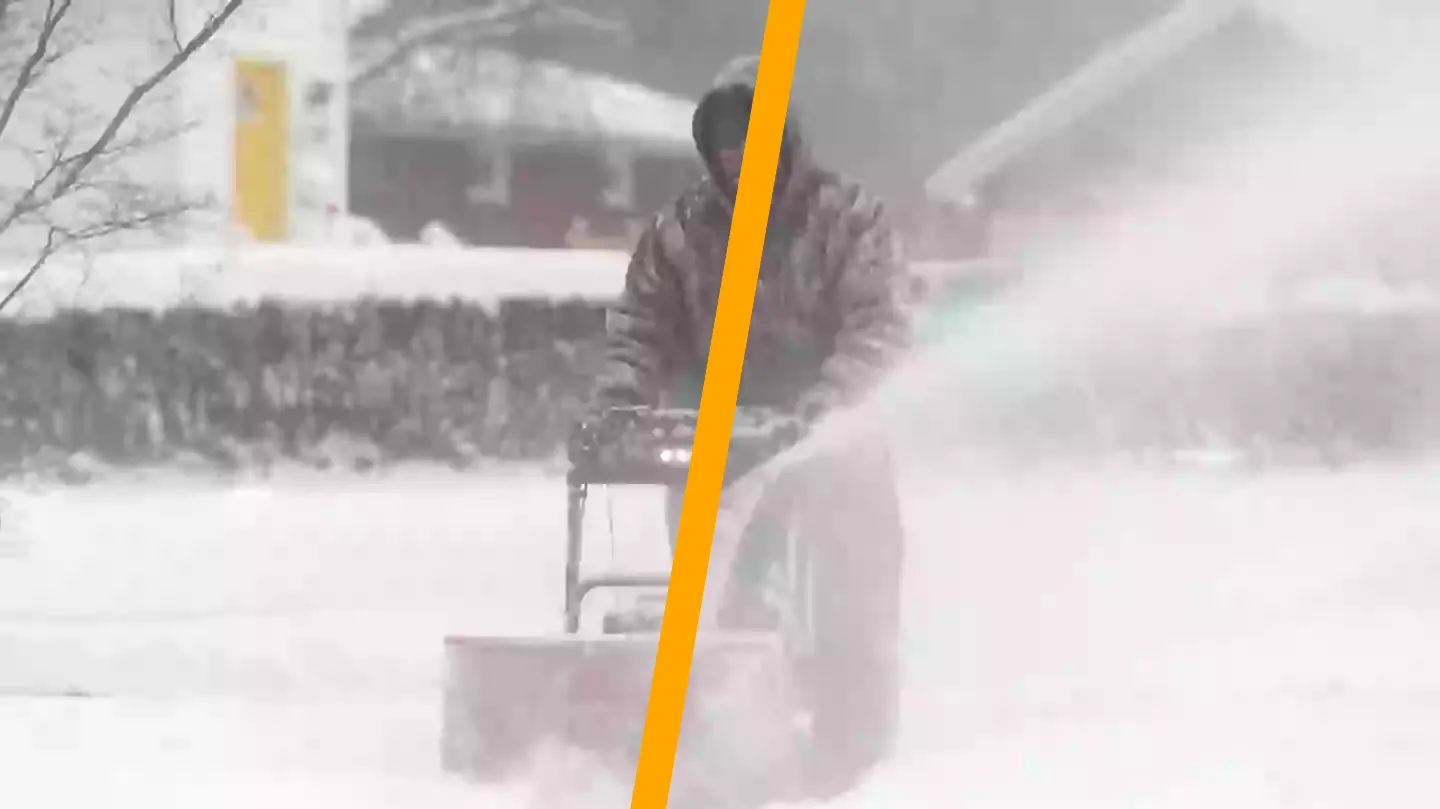The National Weather Service is advising residents to ‘prepare’ effectively for ‘an Arctic air mass’ that is anticipated to ‘plunge into the Central US this week’.
Just when it seemed like winter was receding, another round of cold weather is approaching, and this time it’s anticipated to be ‘record-breaking’.

The National Weather Service outlines that the polar vortex is ‘a large area of low pressure and cold air surrounding both of the Earth’s poles’, which ‘ALWAYS exists near the poles, but weakens in summer and strengthens in winter’.
“The term ‘vortex’ refers to the counter-clockwise flow of air that helps keep the colder air near the Poles. Many times during winter in the northern hemisphere, the polar vortex will expand, sending cold air southward with the jet stream (see graphic above).”
“This occurs fairly regularly during wintertime and is often associated with large outbreaks of Arctic air in the United States.”
Cold spells triggered by the polar vortex have been recorded in 1977, 1982, 1985, 1989, and in January 2014, indicating they’re ‘not something new’. Additionally, ‘portions of Europe and Asia also experience cold surges connected to the polar vortex’.
The National Weather Service assures the public ‘there is no cause to be alarmed when you hear about the polar vortex’ but emphasizes that ‘you should be prepared for colder temperatures,’ which can be dangerous if not taken seriously.

The National Oceanic and Atmospheric Administration (NOAA) disclosed that ‘an Arctic air mass is expected to plunge into the Central US this week’ accompanied by ‘record-breaking cold with dangerous wind chills as low as -60°F,’ as noted in an update shared on Twitter by the NWS Weather Prediction Center.
The Twitter post from February 17 continues: “Heavy snow is expected from Kansas to Missouri on Tue, with snow and ice impacting North Carolina and southeastern Virginia on Wed.”
It cautions that ‘wind chills’ may dip to between ‘-30°F’ and -60°F’ and will ‘linger for multiple days,’ creating conditions that might result in ‘frostbite within minutes’.
“Snowfall rates of 1″/hr may lead to at least eight inches of accumulation (>60 percent chance),” which ‘may create hazardous driving conditions,’ especially if the snow is blown or drifts.

The National Weather Service concludes by advising: “Check the forecast for your area on weather.gov to ensure you are dressed appropriately. It is also a good idea to check the items in your home and car emergency kits at the beginning of each winter season to ensure you are prepared for any type of hazardous winter weather.”

